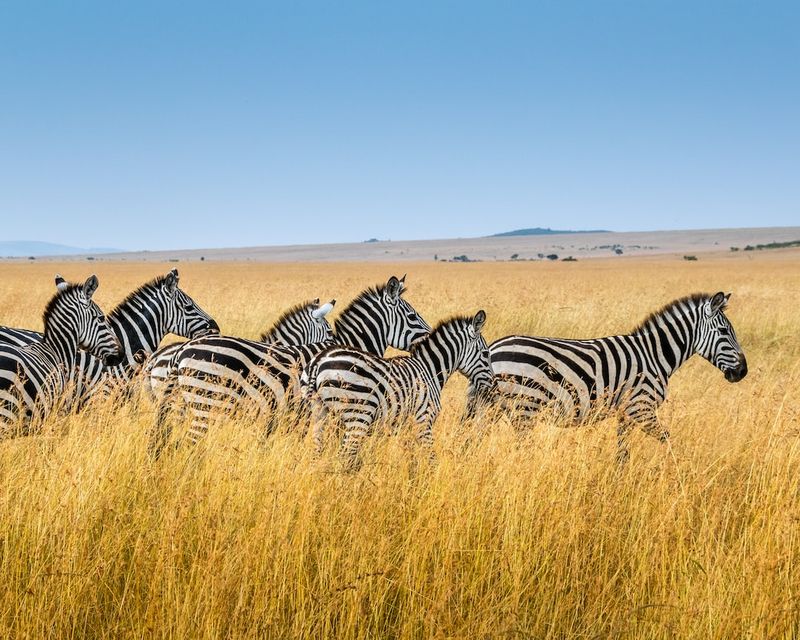The migration route covers two main areas: the Okavango Delta and the Chobe River floodplain during the dry season (June-November) and from the Chobe floodplains to Nxai Pan National Park when the rains begin, typically around the end of November or early December. The journey takes around 14-20 days for most zebras, covering approximately 155 miles, but some individuals take a more circuitous route that can take more than a month and cover up to about 250 miles. The grasses at the pans of Nxai Pan National Park have higher protein and mineral content than in the Okavango Delta or the Chobe floodplains, providing the zebras with two to three times more nutrition than grasses in these areas. As a result, up to 30,000 animals move at any one time in a blur of black and white stripes.
The zebras’ ability to find their way on their migration route is even more impressive given the history of Botswana. In the 1950s and 60s, Botswana constructed a series of extensive veterinary fences to combat outbreaks of foot-and-mouth disease in domestic cattle, which stretched for hundreds of miles, partitioning the country. The fences blocked the migration routes of the zebras, and from around 1968, no zebras could migrate. It was only around 2004 that these fences were removed, yet some of the zebras managed to migrate again within three years. As the average life span for a zebra in the wild is around 12 years, no foal born in 1968 would still be alive in 2004. No living zebra could remember the route, so the zebras instinctively followed the same ancient migration patterns as generations before them.
The Greater Makgadikgadi includes two National Parks, Makgadikgadi Pans National Park and the smaller adjacent Nxai Pan National Park, which are located in the Kalahari Desert, the world’s largest salt pans. African Bush Camp’s Migration Expeditions Camp is the best place to stay on a quest to see the zebras. This is a temporary camp, operating only three months of the year. This eco-sensitive, predominantly solar-powered camp offers four Meru-style canvas tents, each with comfortable beds and ensuite bathrooms with basins and bucket showers that are replenished with hot water on demand. A spacious dining and lounge tent, and incredible meals, means that even given the remoteness of the location, you’re never really “roughing it” despite being in the remote wilds of Nxai Pan.
Botswana‘s zebra migration is an impressive spectacle that should be seen by all travelers interested in wildlife and nature. It is one of Africa’s best-kept secrets, and the chance to see thousands of zebras moving across the landscape is something few travelers will ever forget. These discoveries remind us that even in this day and age, nature is still full of surprises.

<< photo by sutirta budiman >>
You might want to read !
- The Ripple Effect: Tracing The Journey Of Water From Source To Multi-Valued Resource
- “Saving the Great Pollinators: The Endangered Monarch Butterflies”
- “Shining a Light on Environmental Concerns: Earth Hour Returns”
- The Mekong: A Conduit of Artistic, Culinary, and Cultural Riches
- The Dark Side of the Reptile Trade: Virginia Man Pleads Guilty to Trafficking Endangered Turtles